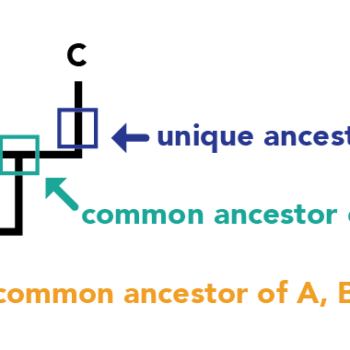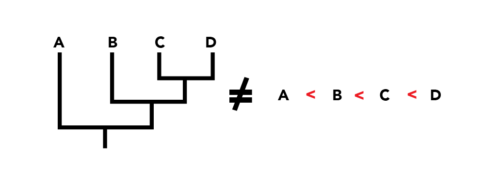Image Caption
Just because we tend to read phylogenies from left to right, there is no correlation with level of "advancement."
Image use policy: For non-commercial, educational purposes, this image may be used with a Creative Commons CC BY-NC-SA 4.0 license. Please credit as follows: © University of California Museum of Paleontology, Understanding Evolution, www.understandingevolution.org
See where this image appears on the Understanding Evolution website »
This image is part of a series:
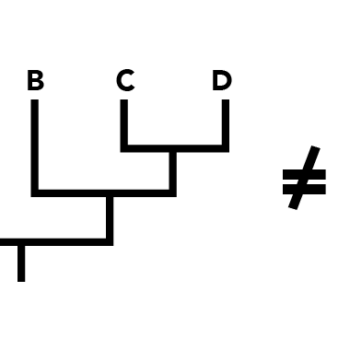
Phylogenies (1 of 3) Tree-like not ladder-like
Evolution produces a pattern of relationships A B C D among lineages that is tree-like, not ladder-like.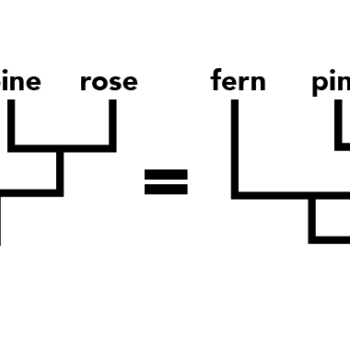
Phylogenies (3 of 3) Order doesn’t matter
For any speciation event on a phylogeny, the choice of which lineage goes to the right and which goes to the left is arbitrary. These phylogenies are equivalent.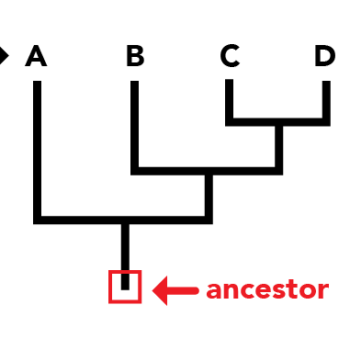
Understanding phylogenies (1 of 4)
Understanding a phylogeny is a lot like reading a family tree. The root of the tree represents the ancestral lineage, and the tips of the branches represent the descendents of…
Understanding phylogenies (2 of 4)
When a lineage splits (speciation), it is represented as branching on a phylogeny. When a speciation event occurs, a single ancestral lineage gives rise to two or more daughter lineages.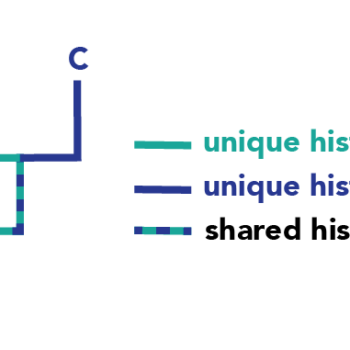
Understanding phylogenies (3 of 4)
Phylogenies trace patterns of shared ancestry between lineages. Each lineage has a part of its history that is unique to it alone and parts that are shared with other lineages.